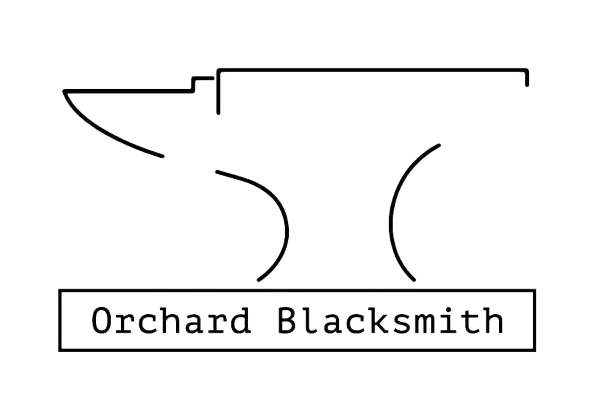Punching vs. Slitting: What’s the Difference and How to Do Both
Blacksmithing is full of fundamental techniques, and two of the most useful are punching and slitting. Both methods let you create holes in metal stock without drilling — saving time, adding character, and staying true to traditional forging.
If you’re just starting out, or if you want to refine your skills, this guide will walk you through the basics of punching and slitting, step by step.
What’s the Difference?
Punching: Driving a punch through hot steel to create a round or shaped hole. Commonly used for nail holes, decorative work, and tool-making.
Slitting: Using a chisel-like tool to cut a long, narrow opening. This is especially handy for creating slots, eyes, and openings in tools like axes.
Both techniques use the same principle: hot metal + shaped tool + hammer force. But they produce very different results.
Tools You’ll Need
Forge: Coal, propane, or induction — whatever you normally use.
Punch or Slitting Chisel: Heat-resistant tool steel is best (H13 or S7 are popular choices).
Anvil with Hardy Hole or Punch Plate: To support the work and allow the tool to pass through.
Hammer: A cross-peen or rounding hammer works well.
Tongs: To hold your work securely.
Lubricant (optional): Beeswax, coal dust, or graphite can reduce sticking and extend tool life.
Step-by-Step: Punching Metal
Heat Your Stock
Bring your workpiece to a bright orange or yellow heat. Punching cold steel risks cracking your work and ruining your tool.
Mark the Spot
Lightly centre-punch (cold) before heating if accuracy is critical.
Set the Punch
Place the punch on the hot steel where you want the hole. Strike firmly with your hammer to sink it partway.
Work Halfway Through
Punch about halfway into the thickness of the metal. Remove the punch quickly to avoid sticking.
Flip the Work
Reheat if needed, then line up the punch on the opposite side. A slight dimple from the first punch will help you align it.
Drive Through
Strike until the plug (called a “slug”) is forced out, leaving a clean hole.
Clean & Finish
Dress the hole with a drift (tapered tool) to refine its shape and size.
Step-by-Step: Slitting Metal
Heat Your Stock
Again, work at a bright orange/yellow heat. Red heat is too cool for efficient slitting.
Set the Chisel
Place the hot workpiece flat on the anvil. Position your slitting chisel where you want the slot.
Strike and Withdraw
Drive the chisel into the surface, then withdraw quickly. Don’t let the tool sit too long or it may stick.
Work in Passes
Rather than cutting through in one go, make several passes, reheating as needed. Work along the length of the slot until you’ve cut about halfway through.
Flip the Work
Reheat, then repeat the process from the opposite side.
Remove the Web
Eventually the thin web of metal will shear apart, leaving an open slot.
Refine the Shape
Use a drift to stretch, widen, or shape the slit into its final form.
Tips for Success
Heat Often: Cold steel fights back. Keep reheating to avoid damaging tools.
Lube the Tools: A dab of beeswax or coal dust helps punches release more easily.
Keep It Straight: Misalignment causes lopsided holes. Always flip and check your progress.
Practice on Scrap: Every heat, tool, and hammer is different. Build muscle memory on scrap stock before moving to a real project.
When to Use Punching and Slitting
Punching: Nail holes in straps, decorative rivet holes, hammer-eye preforms, keychains, hinge work.
Slitting: Axe and hammer eyes, decorative slots, tong jaws, or openings in ornamental work.
These two skills are building blocks. Once you master them, you’ll be able to tackle complex projects like hammers, axes, and scrollwork with confidence.
Final Thoughts
Punching and slitting aren’t just about making holes — they’re about control. The ability to move hot steel precisely is what separates a beginner from a seasoned smith.
If you are interested in discussing a project with us, please do not hesitate to contact us.
